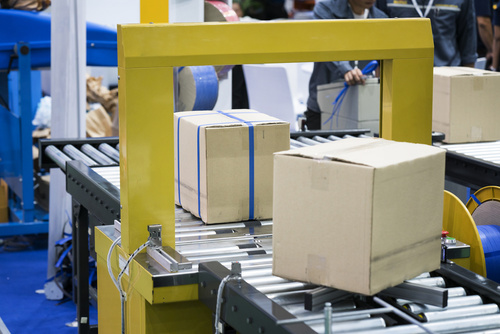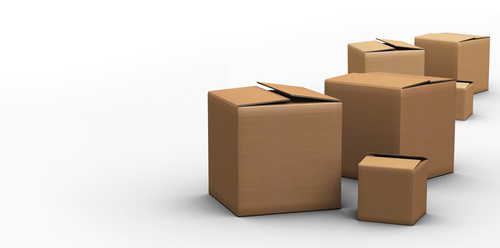With an increased emphasis on being environmentally-friendly, many governments have reviewed their approach and have moved further in this direction. In the US, cities like Washington D.C (tax on plastic bags), San Francisco (complete ban on plastic bags), and Boston (tax and ban on single-use bags), have implemented their own laws. Around the world, Kenya, Chile, UK, Australia, and China have also enforced their own rules. Additionally, India enforced a ban on single-use plastics in July, 2018.
Most plastic bans include: PE bags, disposable plastic cutlery, disposable thermocol items, plastic wrap used for packaging and storage, non-woven polypropylene bags, plastic pouches for storing liquid, plastic packaging for food items, and plastic and thermocol decorations.
It has been determined that these plastics are the most harmful for the environment as they clog water bodies due to improper disposal, lead to ground water pollution, and disturb soil microbes.
With more and more countries adopting alternatives to plastic, the use of paperboard packaging has been gaining further acceptance. This has also been driven by a retail boom and the introduction and increased use of e-commerce. It is also important to note that paperboard packaging is consumer-friendly, provides excellent product protection, is lightweight, easy to transport and stack, and significantly easy to dispose of. However, the underlying and important aspect is that paperboard packaging is bio-degradable.
Given this it is no wonder that the paper packaging market is growing at a rate of 7.5%. In fact, industry estimates suggest that Amazon and Flipkart — top two players in the $17-billion ecommerce sector — consume between 1,200-1,400 tonnes of paper that goes into making boxes and printing bills.
For other large organizations such as Swedish furniture company IKEA, the switch-over to paperboard has been undertaken very quickly. And, as it is clear, the effects of paperboard packaging replacing plastics can greatly reduce climate impact, businesses are climbing on the sustainable bandwagon to underline their positive appeal for the environment.

Across the ocean, in the US, tech giant Apple has already outlined its longer-term vision in this matter. Through its October 2017 Paper and Packaging Strategy, it details how it “succeeded in reducing the plastic content of the iPhone 7 packaging by 84 per cent compared with that of the iPhone 6s.” Going forward, it is evident that this strategy is being used extensively with regard to its Apple’s smart speaker, Homepod. Here, “an incredibly complex paperboard construction with closures holds the speaker cord in place and there is also a setup to secure the plug.” And as has been mentioned, “there would be have been no doubt that plastic would have been the material of choice for this even up to 10 years ago.”
However, despite all of this, when it comes to replacing plastics there are still challenges that need to be overcome. Some of these include: the high cost of production caused by inadequate availability, the high cost of raw materials, a limited availability of good fibre, as well as technological obsolescence.
Further, major industries such as fresh and frozen foods, dairy, pharmaceuticals, beverages, snacks, and confectionery, have been severely impacted given their current extensive use of plastic packaging.
It is also evident that both the organized and unorganized sector are engaged in the packaging industry. Within the organized sector, SMEs that have been producing plastic packaging cannot quickly switch to paperboard and require time to do so. Thus, the plastic ban has adversely impacted sales and jobs in this sector. Many enterprises have also had to take up loans even though don’t have easy access to financing and funds. So despite the paper and paperboard markets growing rapidly there are still obstacles issues surrounding expansion of capacity.
Regarding the paper industry, it too has its challenges given the overall fragmentation of the market, which is served by around 500 various-sized mills. Further, the capacity for paper production has slowed down primarily due to a shortage of its key raw material – pulp wood. This is coupled with the rising prices of local waste paper. However, though this has been partially mitigated by renewed agroforestry initiatives, the industry has regularly requested for a policy to be implemented that allows access to degraded forest land for paper mills to raise pulp wood plantations for sustainable development. This, unfortunately, has yet to be undertaken.
In 2017, paper companies did not undertake price hikes due to factors such as competition from imports, stabilization in wood prices lower power, and fuel costs but by FY18, domestic paper prices had risen marginally.
In terms of supply there is a shortage of paperboard packaging and a study suggests that the paperboard segment will face a shortfall of 12.5 lac MT.
However, this supply deficit will mostly help players who are self-sufficient with raw materials and have cost optimization plans. It will also benefit major players in the industry who are using cash whilst adversely affecting the unorganized and SME sectors.
The shortfall in supply will also cause delays and disruptions in distribution and the delivery of goods produced as there is a lag for sufficient quantities of paperboard packaging material to enter the market. However, on the plus side, this may result in opportunistic price rises within paperboard packaging materials, that in turn, will raise the costs of goods overall.
It is clear that as technologies develop and more companies understand the reasons behind omitting plastics and looking towards alternatives, paperboard usage will increase. Though nations have adopted other materials at different rates and speeds, there has been a concerted effort on the part of governments, businesses, and environmental groups to push for steps to move away from plastic usage. It still remains to be seen whether current global conditions have already been too adversely effected to reverse the process but the increased move towards paperboard can only be seen as a positive sign.

